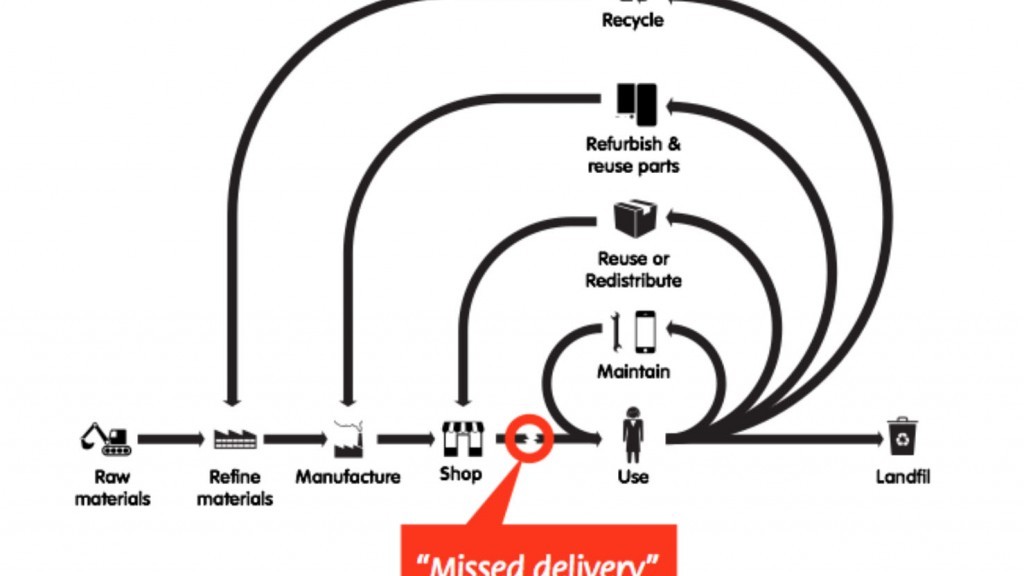Resources - Past event
Service Design for a Circular Economy

On Monday 19th Jan, we held the first of our service design workshops at the Fab Lab, run by Mark Shayler and Rob Maslin. Our 30 participants brought a huge range of ages, backgrounds and interests, from product innovation teams at large corporates to small business designers and entrepreneurs. We ‘tore down’ everyday items – jeans, lipsticks and mobile phones – and investigated their journey from source to waste from the perspective of all the different people that might be involved. We did our own ‘quick and dirty’ lunchtime research by talking to local shoppers and sales assistants… and we started to consider some of the decision ‘hotspots’ and behavioural issues that might influence the journey of a particular product within a system. In this blog, Mark and Rob give an introduction to the idea of service design for a circular economy. We hope that you will join us for our next workshop, also at the Fab Lab, on 19th March!
The circular economy is all about resource or material flows, right? Therefore it makes sense that the people responsible for designing ‘stuff’ are at the centre of a circular economy? Well, that’s only part of the story.
Going with the Flow
The part that we usually overlook while understanding and designing material flows is arguably the most important. It is the flow bit. The materials are tangible, so they are hard to ignore. But it is people and services that make things flow and change waste to resource. Because these things are intangible they are a lot easier to miss. If you look at a diagram of the circular economy, the decisions made by service designers will often be represented by the arrows that link the icons representing physical things. It’s these arrows that are important.
A service failure is often the reason that all of the individual bits of a system can be designed well and yet it still breaks down. For example a well designed, easy-to-use phone can be sold by a well branded store. But the experience can be infuriating if the store gets the delivery wrong, provides the wrong product or doesn’t work with the customer’s computer. In terms of the circular economy, these aspects also have some impact on how materials flow: for example, if packaged electronics can fit through a letter box, it makes delivery easier, but it also increases the return of products to the manufacturer at the end of their life. Or, more fundamentally, if the service you get from the phone company is legendary then you’ll stay with them, perhaps forever. If you believe what they believe and if they manifest that in their service, then they’ve got you!
Business models that help companies take more responsibility for the materials/products at the end of their life, such as leasing, are also ways of increasing the return of products to the manufacturer. If companies get their products back it is easier for them to remanufacture and recycle products to a higher standard. It has led to what we describe as the ‘product to service’ shift, where people don’t own products, they just have access to them for the requisite period of time before they are returned. Naturally this has led towards thoughts about service design, but the potential of service design for a circular economy in fact goes much further!
Rethinking the system
Service design can refine existing services so they work better within a system, but it can also suggest completely new services that reconfigure the system itself. For example, instead of designing a better way of accessing a kettle, we might design a better way to access boiled water. The skills of the service designer can also bring value to sectors such as fast-moving consumer goods, not an area you would immediately think of as part of a service, but which can take huge benefit from ‘design thinking’.
Service design has the potential to play a part in various behaviour change campaigns as well as the design of policy, with examples such as the Government’s newly created policy lab. There are also many things that service design tackles which are not visible to the end user, for example creating organisational management systems that help staff work across departments to support seamless customer experiences. More germane to a circular economy is the example of Project Recover and unBuild, which created propositions to help align the interests of a manufacturer’s end of life value chain. The aim was to enable them to get more products back at the end of life and in better condition, through the manufacturer’s WEEE compliance scheme for reuse, recycling – in order to realise more value for the entire chain. And there are many more examples of how service design can prove itself to be central to a well-functioning circular economy.
It is an exciting time to be working in this space, as it represents a new frontier for both the circular economy and service design. And the Great Recovery workshops being run on 19th Jan and 19th March are a great opportunity to further explore and develop the contribution of service design to the circular economy at large.
Rob Maslin, We All Design, wealldesign.co.uk
Mark Shayler, Ape, www.thisisape.co.uk.





